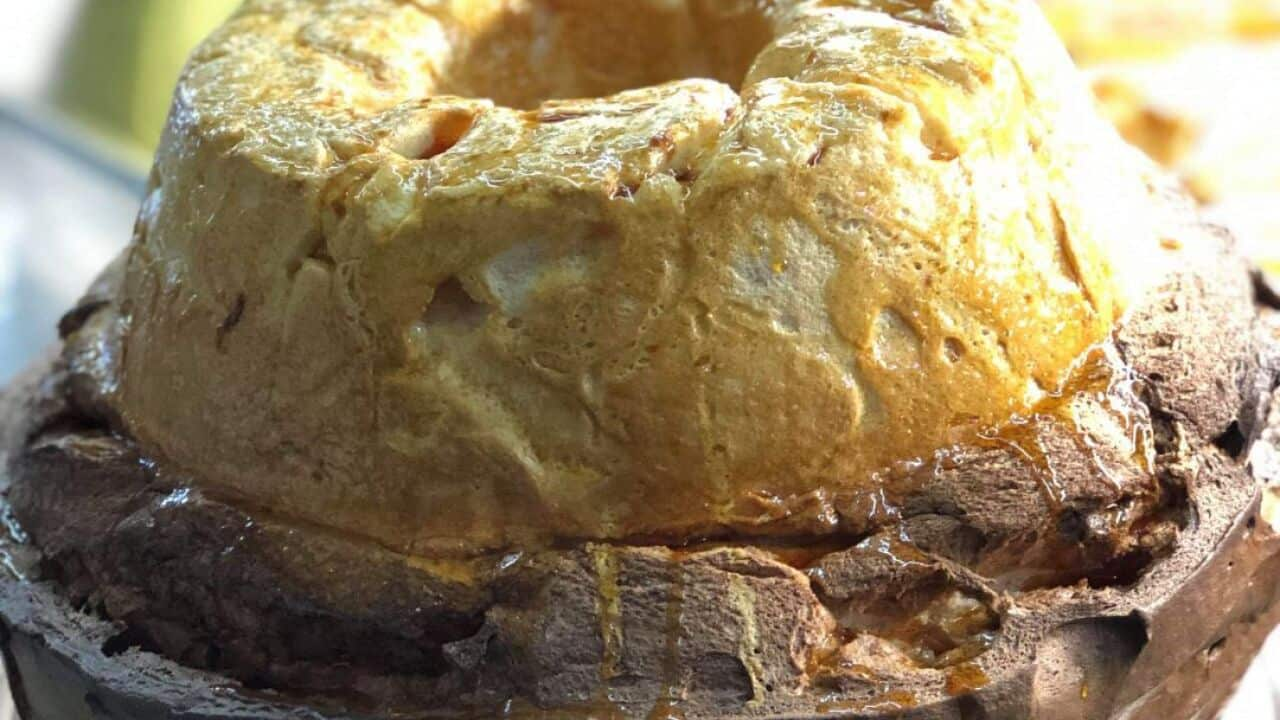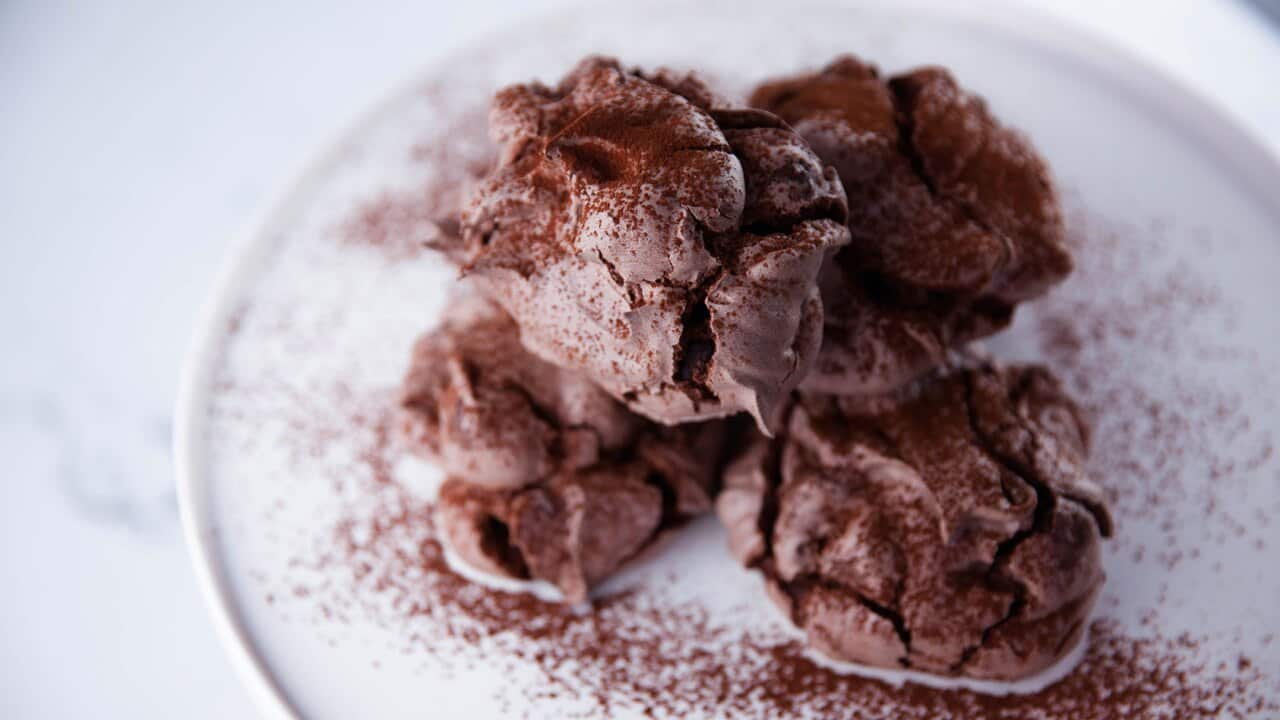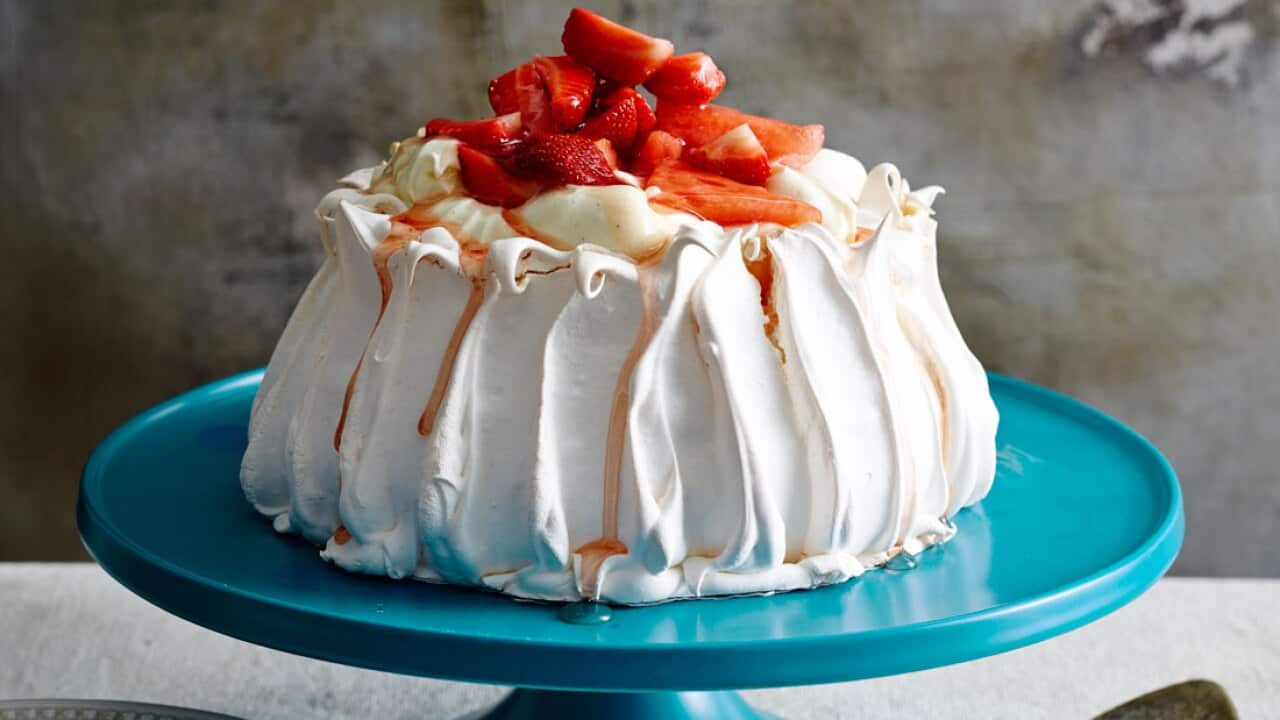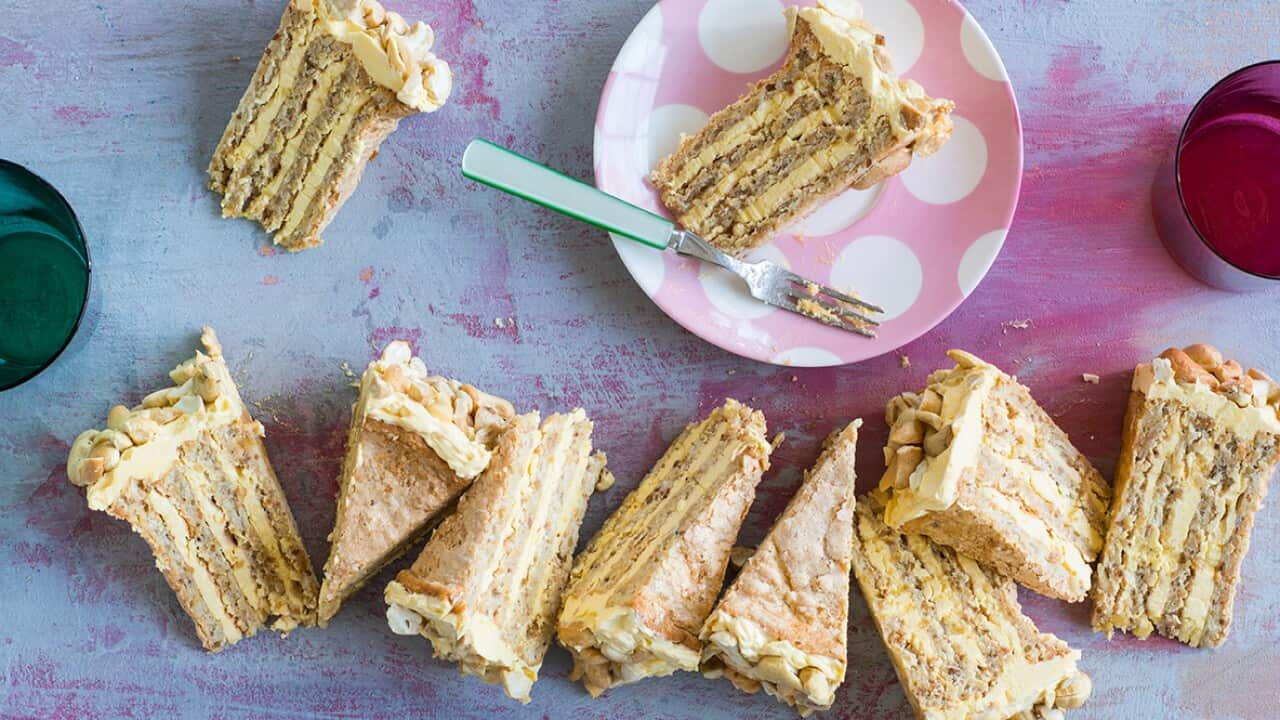--- Enjoy a sweet taste of France at home with Guillaume Brahimi on , each night at the start of the Tour de France exclusive broadcast on SBS from 29 August to 20 September 2020. For broadcast times, go to ---
Macarons, pavlova, petit fours: they may all present differently but these sweet treats from the meringue family have something in common beyond eggs whites and sugar according to Ottolenghi's Helen Goh.
"It's a real hit without heft. You can eat a meringue without feeling like you've eaten a cake and want to lie down," says Goh.
MELTS IN YOUR MOUTH

Sweet dreams come to life for Yotam Ottolenghi and Melbourne's Helen Goh
Goh also appreciates the "ethereal" quality of meringues.
"There's something pure about the whiteness; you can then add fruit or chocolate to create a centrepiece…they are [also] delightful in how they take on colours and flavours," she says. French-born Jérôme Magisson, a patisserie chef with Le Cordon Bleu in Brisbane, agrees. He grew up in Europe and his own love of meringue dates back to his childhood.
French-born Jérôme Magisson, a patisserie chef with Le Cordon Bleu in Brisbane, agrees. He grew up in Europe and his own love of meringue dates back to his childhood.

Meringues can be considered to have an ethereal quality. Source: China Squirrel
"French meringue comes in all different colours and flavours, and toppings vary by region. In the south, they top them with almonds, and in the north, they might use orange zest or strawberries," he says. Italy, France and Switzerland have all staked their claim as the original home of meringues: even today each has its own style.
Italy, France and Switzerland have all staked their claim as the original home of meringues: even today each has its own style.

A chocolate version of French meringues Source: The Chocolate Queen
"In France, meringues are made of egg whites, caster sugar and icing sugar, and we bake it to dry it. It creates a texture that is extremely light and crunchy," Magisson says. In Italy, egg whites are whipped before a hot mixture of syrup made of water and sugar is poured over it to "cook" the egg.
"By doing so you create a foamy texture that is almost like a marshmallow," he says.
It's a real hit without heft. You can eat a meringue without feeling like you've eaten a cake and want to lie down."
In Switzerland, the method is closer to the French, but sugar and egg whites are warmed up slowly together in the bain-marie so the sugar dissolves into the egg white before being whipped and baked.
"It's a more dense and shiny meringue. It's also more foolproof than the French meringue. If you don't do the French meringue properly, after baking the sugar can dissolve with the humidity in the air to leave just pearls of sugar. It's a bit more technical," he says.
YET ANOTHER STYLE
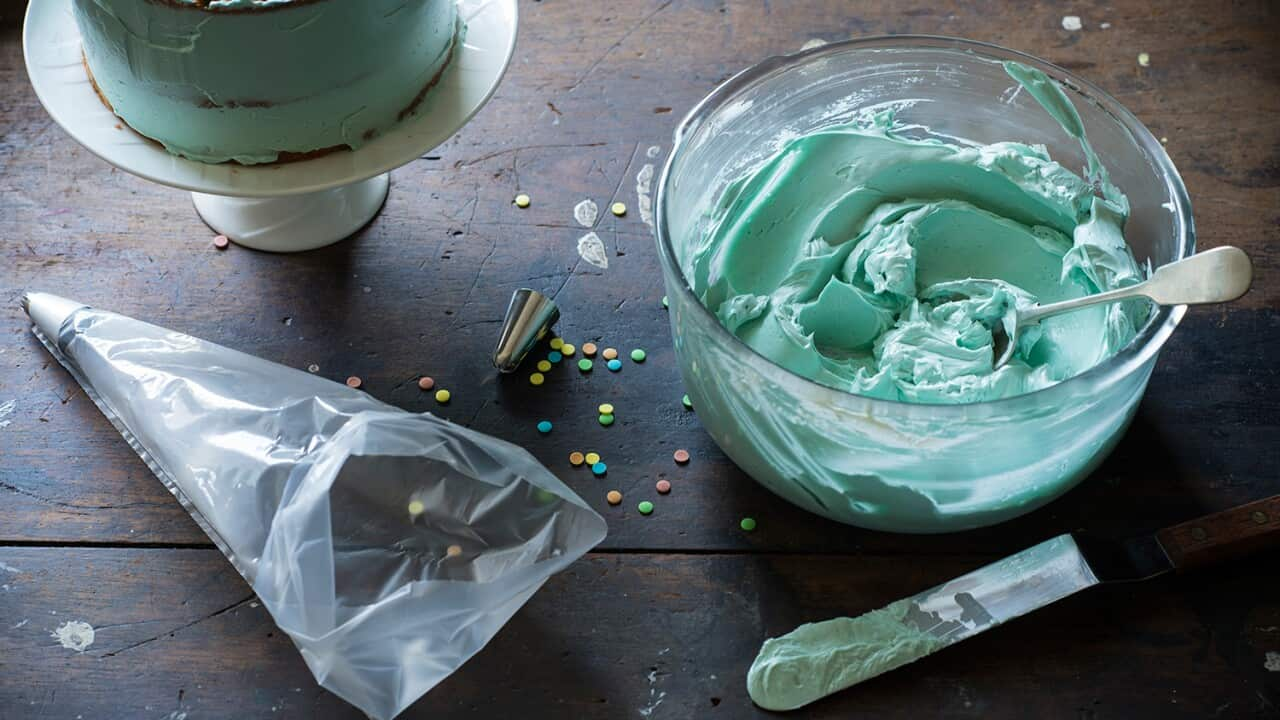
Swiss meringue buttercream
Magisson believes the dessert first emerged as a creative solution to the excess egg whites bakers found themselves stuck with. But regardless of origin claims, what interests Goh most about meringues is how it is used across cultures.
“In Italy, they have a delicious cookie called Brutti Ma Buoni (Ugly But Good). It’s a meringue with nuts folded through it that are then piped or dolloped onto a tray. When it’s cooked it’s essentially a hard meringue,” she says. In Eastern Europe, the meringue/nut combination continues, but here the result is cooked flat and turned into a type of cake featuring layers with buttercream.
In Eastern Europe, the meringue/nut combination continues, but here the result is cooked flat and turned into a type of cake featuring layers with buttercream.

The way Italy makes meringue
"The Hungarians use walnuts and sandwich it with rum buttercream. It's very rich," says Goh, noting that in Russia the same process is used, this time with hazelnuts and a chocolate glaze.
The UK-based Goh also appreciates the flexibility of the Eton mess, a traditional English dessert that dates back over 100 years and turns crushed meringue, strawberries and cream into a pudding.
TRY YOUR HAND AT THE ETON MESS

Dulce de leche Eton mess
"If you have meringues that aren't perfect, crush them and put them in a whisky balloon. It's yummy," suggests Goh.
As for the perfect meringue-making technique, suggestions abound, but for Goh it all comes down to timing.
"You can use copper bowls, make sure there's no trace of fats, use room temperature egg whites, and cream of tartar to stabilise, but if you start adding the sugar before the egg whites are at soft peaks you won't ever get it to rise. The sugar is heavy and will deflate them," she says.
Still, beware of whisking those same egg whites for too long before the sugar goes in (Goh adds it one spoonful at a time).
"Wait for too long and you'll just get crumbly sugar," she warns.

